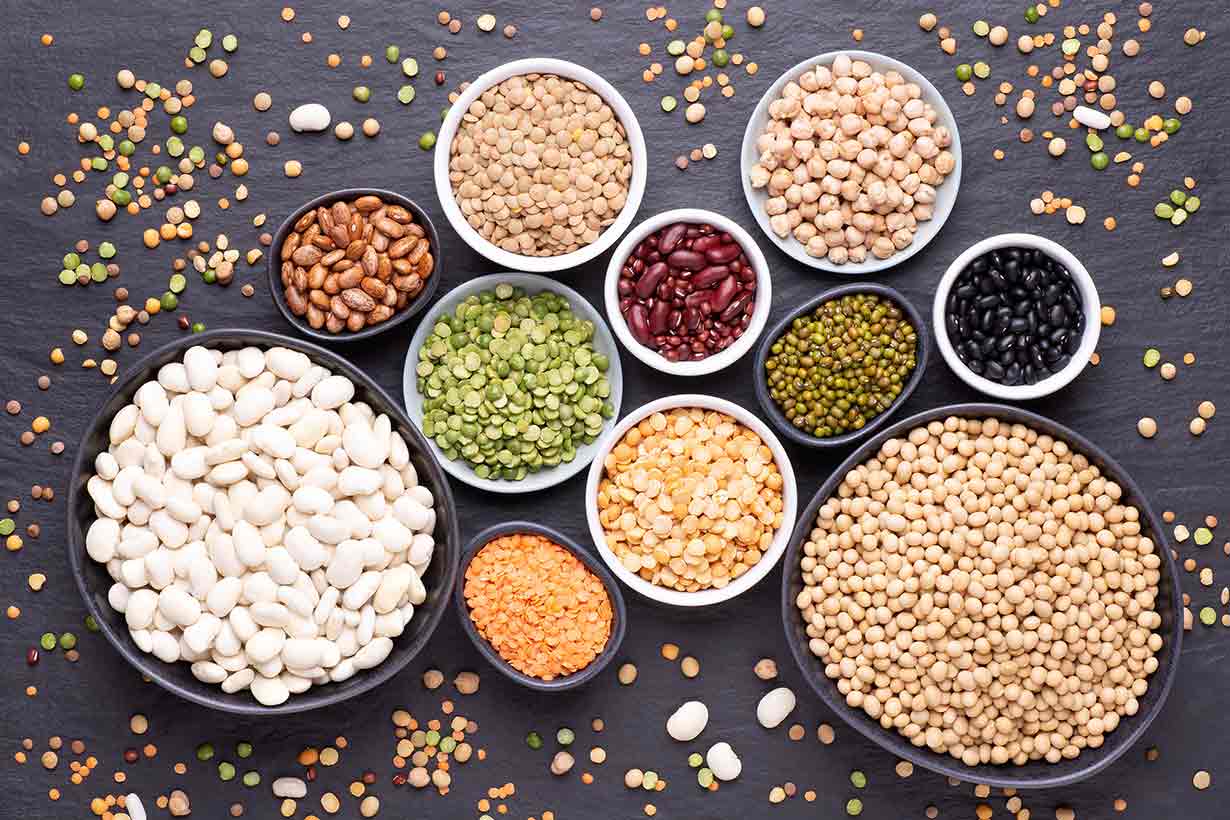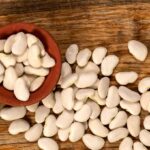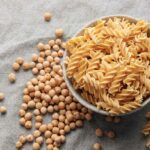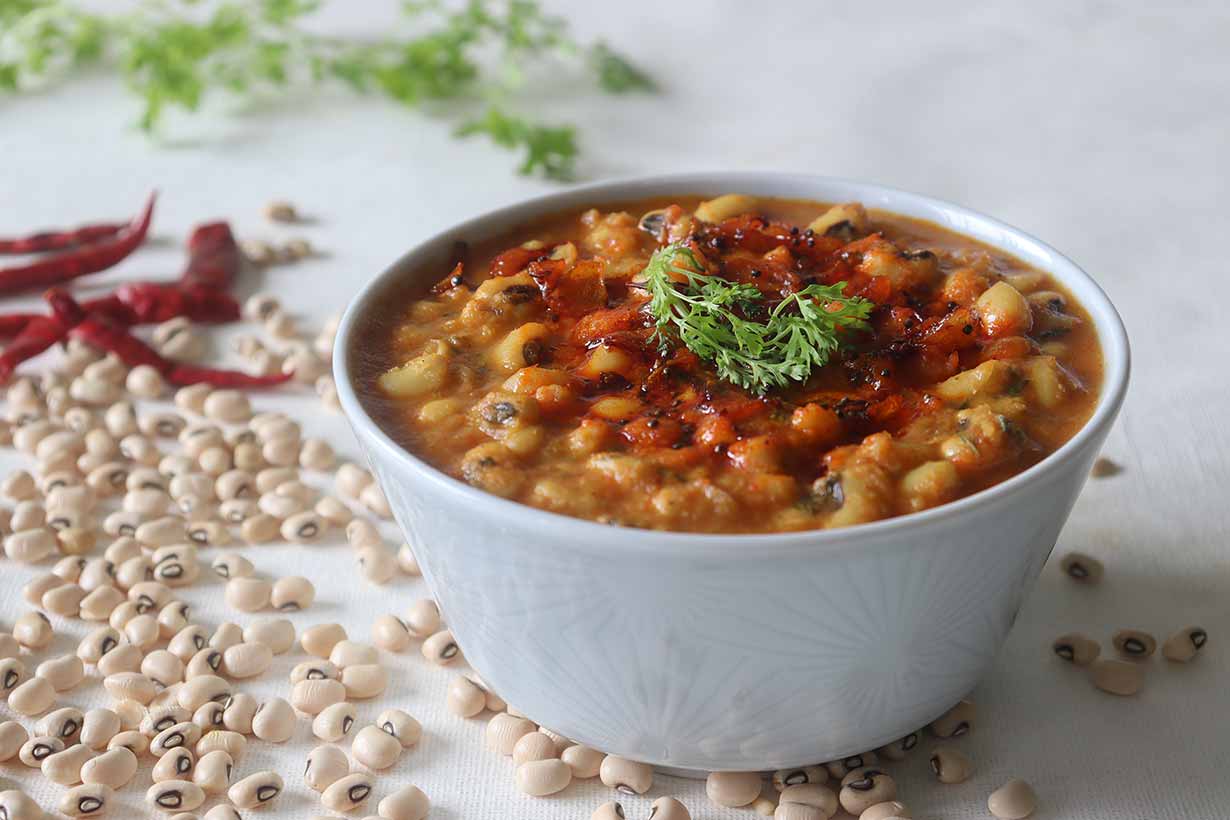Lentils are a type of legume that may offer several health benefits.
This article explores their benefits, their full nutritional profile, and key findings from recent scientific studies.
Key nutrients in lentils
Here are the key nutrients in a 198-gram cup of cooked lentils:
- Calories: 230 kcal
- Carbohydrates: 39.8 g (14% DV)
- Fiber: 15.6 g (56% DV)
- Sugars: 3.56 g
- Protein: 17.9 g (36% DV)
- Folate: 358 mcg (90% DV)
- Copper: 0.50 mg (56% DV)
- Manganese: 0.98 mg (43% DV)
- Iron: 6.59 mg (37% DV)
- Thiamin (B1): 0.33 mg (28% DV)
- Phosphorus: 356 mg (28% DV)
- Potassium: 731 mg (16% DV)
Important Note: The content in this article is for informational and educational purposes only. It should not replace medical advice from your healthcare provider.
Table of contents
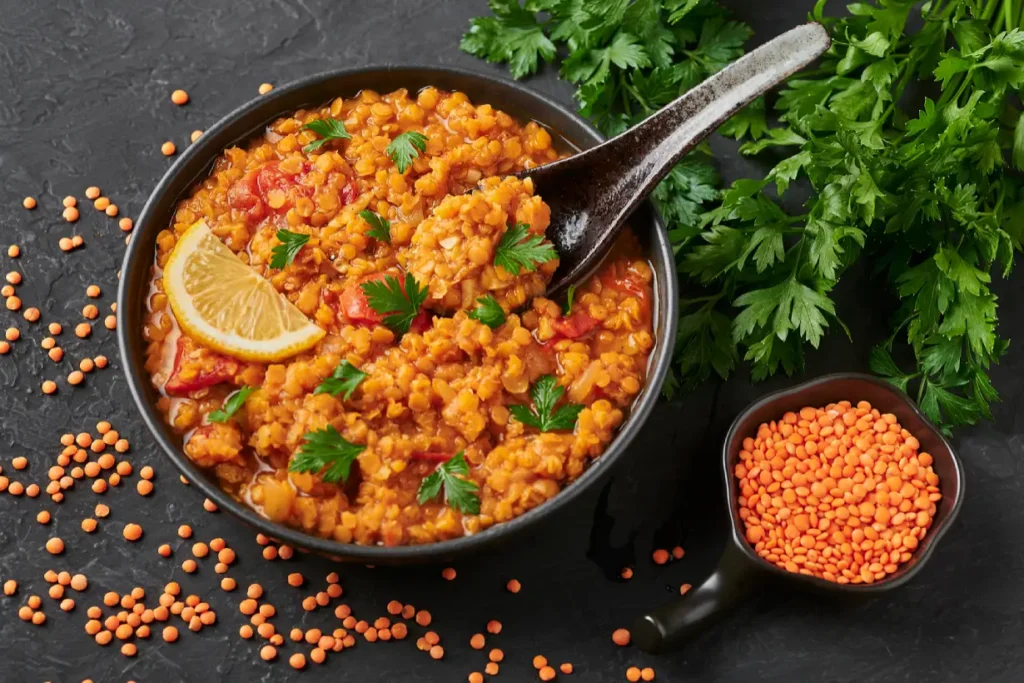
1) Lentils Are Packed With Protein
Lentils are an excellent source of protein, providing (1):
- 17.9 grams of protein per 198 g cup (cooked)
- 9.0 grams of protein per 100 g (cooked)
Based on their raw weight, lentils rank fourth among the highest-protein legumes behind soybeans, lupin beans, and mung beans.
Learn more: The Best Legumes For Protein Ranked
Lentils are not as protein-dense as some animal-based foods or extra firm tofu, but they remain one of the most protein-rich plant-based foods available.
2) One of the Highest-Folate Foods
Another key nutrient we can find in lentils is folate, an essential vitamin that plays a vital role in supporting healthy pregnancies (2).
In fact, the U.S. Centers for Disease Control recommends that all women who can become pregnant get at least 400 mcg of folic acid each day (3). Folic acid is the synthetic form of folate that you can find in fortified foods or supplements.
Here are the notable amounts of folate you’ll typically find in cooked lentils (1):
- 181 mcg of folate per 100 g
- 358 mcg of folate per 198 g cup
358 mcg of folate represents 90% of the daily value for folate, set by the U.S. Food and Drug Administration (FDA) (4). Daily values are based on a typical 2,000-calorie diet.
3) Lentils May Help Lower Blood Glucose and LDL Cholesterol
A 2023 systematic review and meta-analysis found that—according to data from 15 randomized controlled trials—legume intake may have a protective effect against cardiovascular disease and type 2 diabetes risk factors (5).
Total legume intake included lentils, beans, peas, and soybeans rather than focusing on lentils alone.
These “protective effects” included reductions in fasting blood glucose and low-density lipoprotein cholesterol (LDL-C) levels. However, the authors categorized the overall strength of evidence as ‘limited,’ and more research is necessary (5).
That said, similar effects have been obsered with other legumes like pinto beans.
Randomized Controlled Trials Focused on Lentil Intake and Blood Glucose
Several randomized controlled trials (RCTs) have also specifically examined the impact of lentil consumption on blood sugar levels.
Here’s a summary of these recent RCTs and their findings:
- A 2024 randomized controlled trial demonstrated that replacing 25 grams of available carbohydrates in rice chili or potato soup with lentils as an ingredient led to a significantly lower rise in blood glucose. However, the result was not significant when adding lentils to a wheat muffin—possibly due to the presence of sugar in the muffins (6).
- Another 2024 RCT split 38 adults with an above average waist circumference into two groups: one group consumed midday meals containing 980 grams of cooked lentils per week, while the other group consumed calorie-matched, meat-based control meals. After 12 weeks, the lentil group had significantly lower LDL cholesterol and post-meal blood glucose levels compared to control (7).
- Earlier RCTs published in 2022 and 2018 also noted that lentil intake significantly lowered blood glucose and insulin responses compared to control foods such as meat and potato (8, 9).
Overall, there is emerging evidence from randomized controlled trials showing that lentils may lower blood glucose compared to some common staple foods. However, these effects may depend on the context of the meal, and longer-term research is warranted to confirm them.
4) Lentils Are An Excellent Source of Fiber
Like many legumes, lentils have a significant fiber content.
When cooked, lentils typically provide:
- 7.9 g of fiber per 100 g (28% DV)
- 15.6 g of fiber per 198 g cup (56% DV)
Fiber has a range of potential benefits, including its ability to:
- Help lower LDL cholesterol (9).
- Improve digestion and stool movements (10).
- Help lower blood sugar levels (11).
With a cup of lentils providing over half of the daily value for fiber, they’re among the best dietary sources.
5) Budget-Friendly and Easy-To-Prepare
Compared to many other protein sources, lentils are surprisingly budget-friendly—a typical serving costs only cents rather than dollars.
What’s more, compared to other legumes, lentils only need a short cooking time due to their small size. Instead of taking over an hour like some beans, you only need to boil lentils for around 20 minutes and they’re ready.
Lentils are easy to use, and you can add them to a range of foods, from salads and stir-fries to soups and stews. They’ll soak up the flavor of any sauce as well as significantly improving the dish’s nutritional value.
The Nutritional Profile of Lentils
While there are several varieties of lentils that may differ slightly in their nutritional values—such as red and green lentils—the USDA database entry covers ‘lentils’ as one food.
The following tables show the full nutritional values for cooked lentils per 100 grams and per 198 g cup serving, sourced from USDA data (1).
Calories and Macronutrients
| Nutrient | Per 100 g (% DV) | Per 198 g cup (% DV) |
|---|---|---|
| Calories | 116 kcal | 230 kcal |
| Carbohydrates | 20.1 g (7%) | 39.8 g (14%) |
| Fiber | 7.9 g (28%) | 15.6 g (56%) |
| Sugars | 1.8 g | 3.56 g |
| Fat | 0.38 g (<1%) | 0.75 g (1%) |
| Saturated fat | 0.05 g (<1%) | 0.11 g (1%) |
| Monounsaturated fat | 0.06 g | 0.13 g |
| Polyunsaturated fat | 0.18 g | 0.35 g |
| Omega-3 | 0.04 g | 0.07 g |
| Omega-6 | 0.14 g | 0.27 g |
| Protein | 9.02 g (18%) | 17.9 g (36%) |
| Cholesterol | 0 mg (0%) | 0 mg (0%) |
Vitamins
| Vitamin | Per 100 g (% DV) | Per 198 g cup (% DV) |
|---|---|---|
| Vitamin A (RAE) | 0 mcg (0%) | 0 mcg (0%) |
| Vitamin C | 1.5 mg (2%) | 2.97 mg (3%) |
| Vitamin D | 0 mcg (0%) | 0 mcg (0%) |
| Vitamin E | 0.11 mg (2%) | 0.22 mg (4%) |
| Vitamin K | 1.7 mcg (1%) | 3.37 mcg (3%) |
| Thiamin (B1) | 0.17 mg (14%) | 0.34 mg (28%) |
| Riboflavin (B2) | 0.07 mg (5%) | 0.15 mg (12%) |
| Niacin (B3) | 1.06 mg (7%) | 2.1 mg (13%) |
| Pantothenic acid (B5) | 0.64 mg (13%) | 1.26 mg (25%) |
| Vitamin B6 | 0.18 mg (11%) | 0.35 mg (21%) |
| Folate (B9) | 181 mcg (45%) | 358 mcg (90%) |
| Vitamin B12 | 0 mcg (0%) | 0 mcg (0%) |
| Choline | 32.7 mg (6%) | 64.7 mg (12%) |
A 198 g cup serving of cooked lentils provides high (>20% DV) amounts of folate, thiamin, pantothenic acid, and vitamin B6.
Minerals
| Mineral | Per 100 g (% DV) | Per 198 g cup (% DV) |
|---|---|---|
| Calcium | 19 mg (1%) | 37.6 mg (3%) |
| Iron | 3.33 mg (19%) | 6.59 mg (37%) |
| Magnesium | 36 mg (9%) | 71.3 mg (17%) |
| Phosphorus | 180 mg (14%) | 356 mg (28%) |
| Potassium | 369 mg (8%) | 731 mg (16%) |
| Sodium | 2 mg (<1%) | 3.96 mg (<1%) |
| Zinc | 1.27 mg (12%) | 2.52 mg (23%) |
| Copper | 0.25 mg (28%) | 0.5 mg (56%) |
| Manganese | 0.49 mg (21%) | 0.98 mg (43%) |
| Selenium | 2.8 mcg (5%) | 5.54 mcg (10%) |
Per cup serving, cooked lentils offer high (>20% DV) levels of copper, manganese, iron, phosphorus, and zinc.
Frequently Asked Questions
Finally, here are some answers to common questions you may have about lentils.
Both canned and dried lentils are exactly the same in their nutritional content. However, canned lentils have been precooked and will only need reheating for several minutes. On the other hand, dried lentils need cooking for approximately 20-25 minutes, until they are soft and tender. Per gram, canned lentils are significantly more expensive than dried lentils due to this. That said, all lentil products are generally quite affordable compared to other protein sources.
Once cooked, 100 grams of lentils provides 116 calories and a 198-gram cup contains 230 calories.
You can either boil lentils alone for later use, or mix them into soups, stews, and curries, ensuring they have sufficient time to cook (which is generally around 20-25 minutes).
As well as being easy to mix into curries, soups, and stews, there are many dishes you can make with lentils. Add them to salads, mix them with meat when making burgers, or combine them with a pasta sauce. You can also grind lentils into flour and use them in a wide range of recipes—a quick search should surface numerous ideas. Various lentil products are also available, including red lentil pasta.
There is no requirement to eat lentils at a specific frequency, or even at all. However, they are a nutrient-rich food that can provide benefits when regularly included in the diet. But there are many different legumes to choose from, and all offer good nutritional value.
Are Lentils a Healthy Choice?
If you’re considering adding lentils to your diet, you can be assured that they’re a nutrient-rich and beneficial choice.
As well as providing high levels of protein and fiber, lentils are rich sources of folate, thiamin, copper, manganese, iron, and several more essential vitamins and minerals.
Lentils are affordable, easy-to-use, and can play a beneficial role in a healthy diet.

